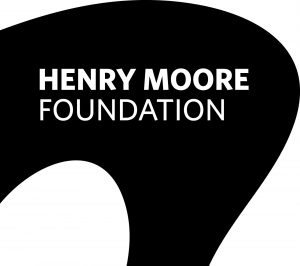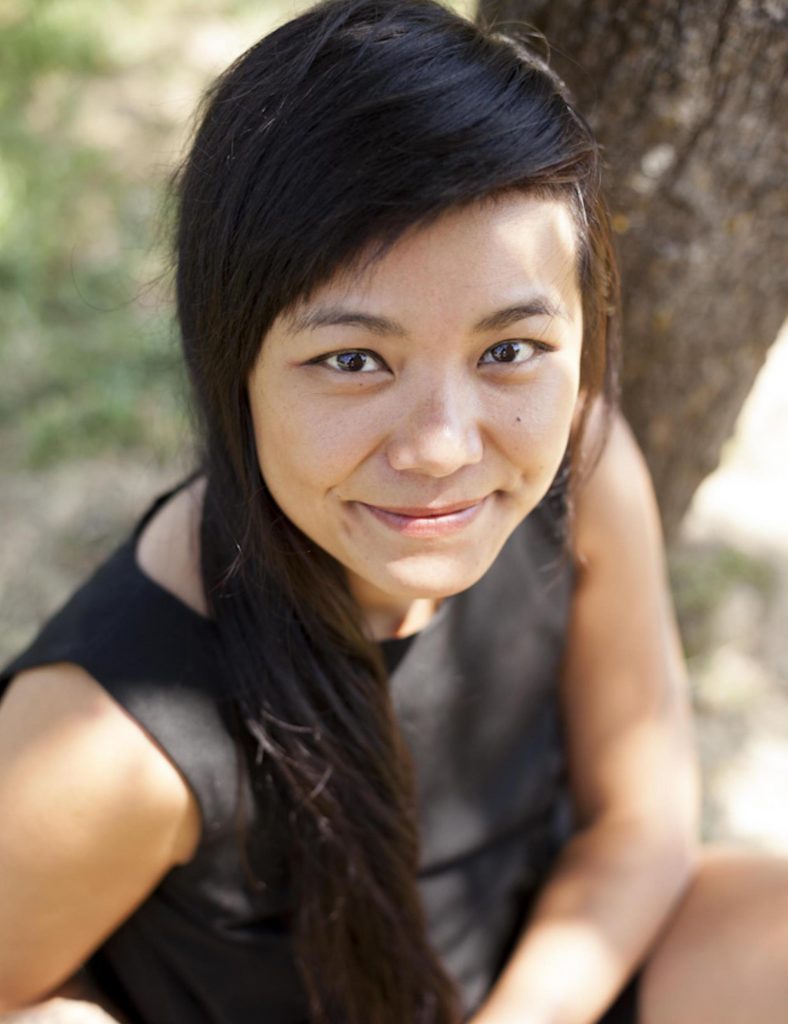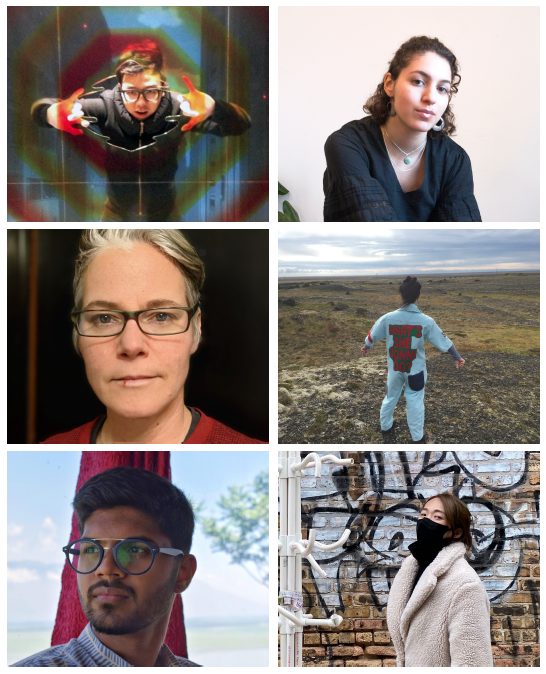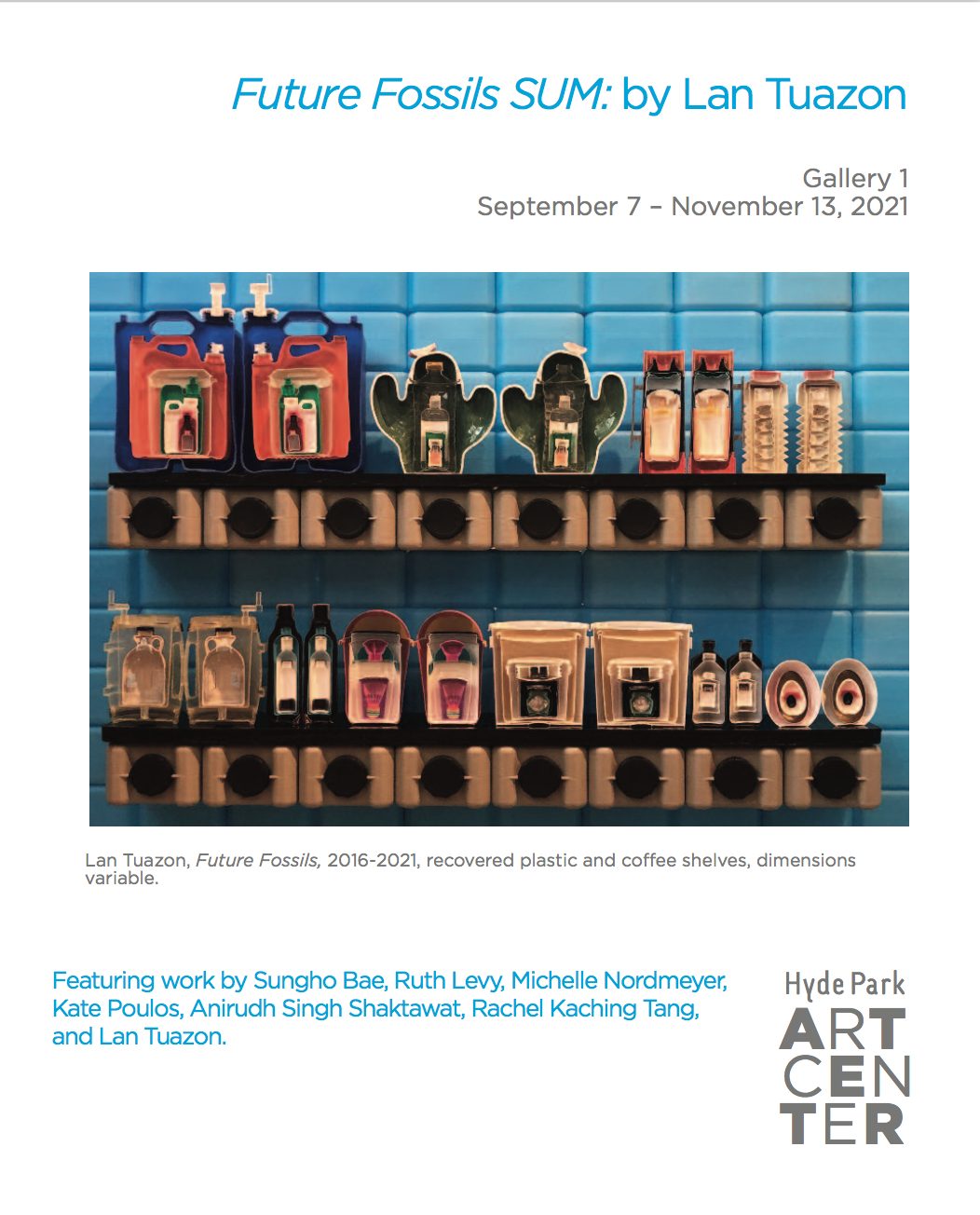Recovered Material Practices
Material recovery extends the lifespan of manufactured objects and diverts them from the landfill. Tuazon challenges the next generation of artists to discover alternative media from processing existing matter. As a longtime educator, she encourages student artists to cut, press, and “cook” whatever is at their disposal to generate new raw substances for art-making. The exhibition features five methods of recovery as an approach to art that activates the circular economy, or a revolving system of production that extends the use and value of raw and processed materials. These processes are represented directly in the art installations inside and outside the house:(1) Transform (2) Densify (3) Reconfigure (4) Secondary use Design (5) Cultivate
Visitors may contribute to the installation by donating their plastic containers for Tuazon to shred and transform into new sheet-pressed panels that will be added to the walls of the installation during the run of the exhibition. The house in Future Fossils: SUM is art and architecture in the circular economy, not to radicalize change, but to normalize it by bringing it home. The artist gives special thanks to civic practice artist Frances Whitehead who has brought this concept of change through normalization as a truly radical idea.
Bodies, Boulders, Buildings
In Tuazon’s artwork, gradual shifts in scale from miniature to massive demonstrate the interdependence of spaces and all things. The house in the gallery is split in half, creating a central core of the installation in which the body is both sheltered and overtaken by the building-as-container. In a moment of infinite egress, or telescoping outward, the installation highlights the connection of all containers, from embryo to house to planet. According to the artist, “hanging in the corner of every room in a Filipino household is the umbilical cord of its occupant. It is a standing reminder that the room and all the space beyond it (house, region, country, and continent) are extensions of the mother’s womb.” Tuazon repurposes and transforms salvaged everyday plastic items—toys, tchotchkes, household goods—and gives mass to the unseen byproduct of consumerism, while reminding us that every action we take has a global chain reaction.
The double meaning of “consume” is intentional: the average person ingests a credit card–sized amount of a week through the nanoplastics that leach into our food and water. The egg—our original container—is a recurring symbol in the artist’s work; it emphasizes the synergy between container, food, culture, beliefs, and history in relation to sustainability. Tuazon intentionally prompts further conversations surrounding food packaging, cultivation, distribution, and access with her immersive installation.
Human-Made Geology
Future Fossils: SUM presents new sculptures, prints, photography, and drawing made in response to the permanent impact mankind has on nature. Environmental science documents the existence of manufactured plastics melded to organic sediment on the ocean floor and in landforms, creating plastic rocks called plastiglomerates. Influenced by these findings, Tuazon considers the long expression of time and speculates on the deposits already made in Earth’s crust, which will define our society to future civilizations. The artist dissects, layers, and fuses plastic objects in a stratification-like form to mimic fossils as a visualization of geological time.
For over twenty years, Tuazon has addressed misconceptions inherent to a Western worldview—a way of seeing nature and people as expendable resources for human profit—through a trilogy of artwork concluding with Future Fossils: SUM. She began the Future Fossils series while participating in the 2016–17 Jackman Goldwasser Residency at the Art Center, where she introduced the archive of nested plastic forms. The trilogy consists of three themes—economy, culture, and power—with artworks about the urban plan, cultural history, and human-made geology. Tuazon playfully modifies culturally significant objects, such as security fences, museum artifacts, and plastic containers, to challenge the problematic power structures these objects represent and to advocate for social and environmental change.








